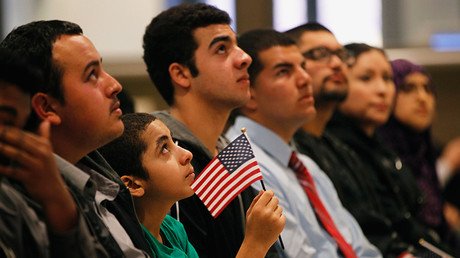America’s ‘white alone’ population decreasing while all other ethnic groups grow – census data

The ‘white alone’ population in the US experienced a decrease between 2015 and 2016 while all other races saw an increase, according to newly-released census data. The numbers also showed that the overall population of the US is getting older.
The figures, released by the US Census Bureau on Thursday, found that while all other groups experienced a natural increase (having more births than deaths) during the time period, the ‘non-Hispanic white alone’ group saw a natural decrease of 163,300.
The decrease left the ‘white alone’ population remaining at 198 million of the nation's 325 million people.
Meanwhile, the country's Asian population saw the biggest surge, growing by 3 percent to 21.4 million. Those who identified as being of two or more races also grew by 3 percent, to 8.5 million.
The Native Hawaiian and Other Pacific Islander population grew by 2.1 percent to 1.5 million, while Hispanics grew by 2 percent, to 57.5 million.
Ageing population
The census data also found that the US population has a “distinctly older age profile” than it did 16 years ago. The median age rose from 35.3 years in April 2000 to 37.9 years in July 2016.
“The baby-boom generation is largely responsible for this trend,” said Peter Borsella, a demographer in the Census Bureau's population division.
“Baby boomers began turning 65 in 2011 and will continue to do so for many years to come,” he added, referring to the age a person can start using Medicare, which is government healthcare for seniors and those with disabilities.
Residents aged 65 and over grew from 35 million in 2000 to 49.2 million in 2016, growing to 15.2 percent of the overall population.
That figure comes amid ongoing concerns of the impact that the baby-boom generation will have on social services including Medicare. According to the Kaiser Family Foundation, net Medicare spending is expected to nearly double over the next decade, from $592 billion to $1.2 trillion.
When the Census Bureau analyzed the data by state, it found that all 50 states experienced either an increase in median age or had the same median age as a year earlier.
The highest median age (44.6 years) is represented in Maine, while the lowest (30.8 years) is seen in Utah.














